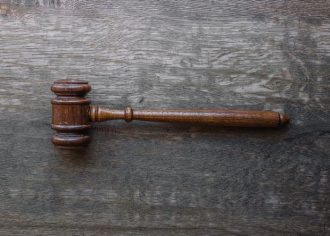July 26, 2011
USPTO Proposes Amending Rule 1.56 To Define Materiality In Accordance With Therasense
On July 21, 2011 the USPTO published a notice of proposed rulemaking to amend Rule 56 (37 CFR §1.56) to define materiality in accordance with the Federal Circuit’s en banc decision in as the Federal Circuit’s en banc decision in Therasense, Inc. v. Becton, Dickinson & Co., — F.3d. — (Fed. Cir. 2011). A similar amendment is proposed to Rule 555 (37 CFR §1.555) defining materiality for reexamination proceedings. The proposed language:

literally incorporates by reference the Federal Circuit’s opinion. The rule explains that under Therasense information is material if the USPTO would find by a preponderance of the evidence that any claim, given its broadest reasonable interpretation, is not patentable in view of the reference. One wonders how trial courts will successfully manage parallel determinations of invalidity by a preponderance of evidence giving a claim its broadest reasonable interpretation, and invalidity by clear and convincing evidence giving a claim its true meaning, but that is a problem created by the Therasense decision itself, not the USPTO’s adoption of it.
The proposed rule states that Therasense also makes information material to patentability where the applicant engages in affirmative, egregious misconduct. This latter part of the Rule seems to be poorly constructed, because while affirmative egregious misconduct is certainly inequitable conduct, it is not clear what information such affirmative, egregious misconduct makes material.
Therasense took an important step in protecting patentees and their patent lawyers from baseless claims of inequitable conduct, but it did so largely through the intent element, and not with its tinkering with the definition of materiality. While the Patent Office’s adoption of Therasense saves practitioners from being confronted with two different and conflicting standards of materiality, the effect of the proposed rule is that the Court of Appeals for the Federal Circuit gets to decide what information applicants should be required to submit to the USPTO to ensure proper examination of patent applications. Given that the Federal Circuit’s primary concern in Therasense seemed to be regulating the number if inequitable conduct claims and not providing Examiner’s with the appropriate information to adequately examine an application, one wonders if the USPTO’s action is appropriate.
Anyone wishing to comment about the proposed rule should submit them on or before September 19, 2011, preferably to AC58.comments@uspto.gov or by mail to Mail Stop Comments Patents, Commissioner for Patents, P.O. Box 1450. Alexandria. VA 22313-1450, marked to the attention of Hiram H. Bernstein, Senior Legal Advisor, Office of Patent Legal Administration, Office of the Associate Commissioner for Patent Examination Policy.





































